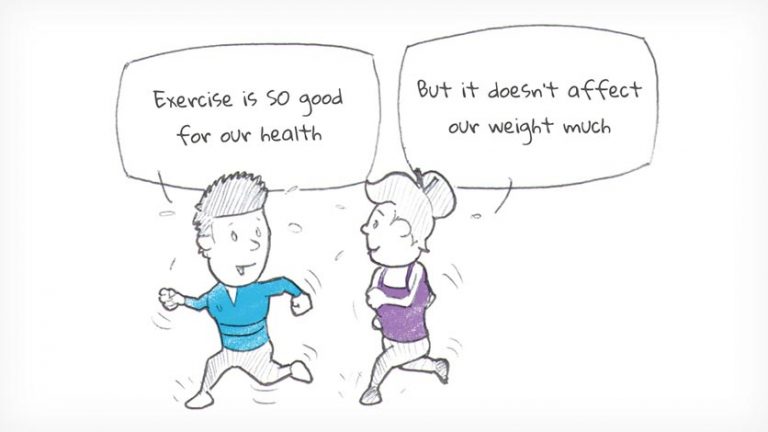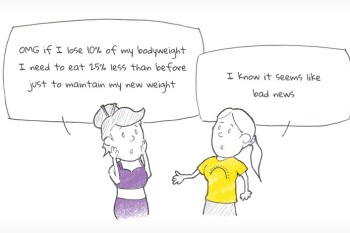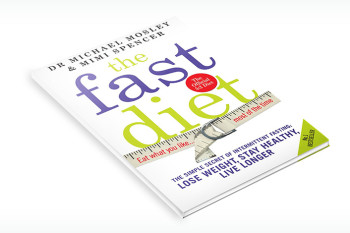How does the body balance calories eaten with calories used?
Our metabolisms are very complex, and although it’s a pretty good rule of thumb that calories in need to balance with calories out (if we eat more than we burn we will put on weight; if we eat less than we burn, we lose weight), knowing how many calories our bodies actually use is quite hard to know for sure. A good starting point is to use the FastDay progress tracker which will give you an estimate based on your age, height, weight and activity level.
Some definitions:
-
Basal metabolic rate (BMR): how much energy your body needs just to exist before you do anything else
-
Resting energy expenditure (REE): the basal metabolic rate plus the energy needed for digestion
- Total daily energy expenditure (TDEE): the amount of energy your body needs to supply you with the fuel to do your daily activities and to maintain your body without losing or gaining weight. TDEE, therefore, is the sum of your REE and the energy you use to walk around, go to the gym, eat your dinner etc.
Learn more about how the body stores and uses energy
What determines how much energy we burn?
The thing that has the greatest influence on your energy expenditure is how big your body is. The bigger the body, the more energy required to keep it going and also the more energy it takes to move it around. You might be surprised to learn that most of your energy intake is used to keep your body operating at the ideal temperature and to keep your body in good repair (your basal metabolic rate).
Taking exercise and being active, for example by taking 10,000 steps every day, are undoubtedly good for your health, and you should do it if you can. But don’t expect to lose weight as a result; it helps, but only a little bit. Exercise burns energy (calories) – but typically makes only a small difference to the amount of energy we burn in a day. Just think about how long you have to spend on a treadmill to burn 500 calories!
Can exercise have a second effect, by increasing our metabolic rate during the periods when we are not exercising? Many people believe this to be true, but there is little evidence for it. As our metabolic rate is influenced by the amount of muscle mass we have, exercise that builds muscle can increase metabolic rate to a small degree. High intensity interval training may also raise metabolic rate by a very small amount. Unfortunately, the small changes in metabolic rate seen in laboratory studies of exercise are insufficient to make any practical difference in our day to day lives. In fact, there is good evidence that some kinds of exercise, particularly prolonged ‘cardio’ type exercise, can result in a compensatory reduction in our non-exercise activity levels in an apparent attempt by the body to limit the amount of calories used overall, and at the same time our appetites increase making it easier to overeat following the exercise session. There is a lot of research going on in this area at the moment and we look forward to the results.
Learn more about how exercise affects metabolism
Our hormones, brain and ‘brown fat’ also affect our metabolic rate. Complex hormonal mechanisms exist to counterbalance the effects of overeating, for example. And it seems likely that some of us are luckier than others – having bodies that are more or less good at adjusting our metabolic rate to burn excess energy.
-
The most important hormones affecting metabolic rate are the thyroid hormones and adrenaline. The thyroid influences energy expenditure by its effects on heart rate, temperature, and muscle efficiency. An under-active thyroid usually results in weight gain.1
-
Periods of overeating tend to increase thyroid function, while periods of under-eating tend to decrease thyroid function.2 So, the thyroid adjusts our metabolism to cope with over- or under-eating.
-
Nerves from the hypothalamus in the brain also influence your heart rate, thyroid function and muscle tone and so can affect your metabolic rate.
-
Finally, we have your brown adipose tissue (BAT). This ‘brown fat’ as it’s called is very different to the white adipose tissue which makes up the body’s main fat stores and that hardly use up any energy. By contrast, BAT is a big user of energy and generates a lot of heat by burning fat. It was once thought that, although born with large amounts of BAT, we lost it all in adulthood. But recent advances in scanning technology revealed that we do have BAT and that there is enough to contribute significantly to our metabolic rate.3 The activity of BAT increases in the presence of cold and during fasting.4,5
Learn more about metabolism and weight loss
What controls how many calories we eat?
When you start fasting, you become much more aware of hunger and appetite: some fast days pass easily with few hunger pangs, others seem to be hard work, and you may ask yourself “what controls my appetite?”
Hunger does not happen just because your stomach is not full. There are a surprising number of hormones and other factors that control our appetite. Here are just some of the most important:
-
Leptin is a hormone made in our body fat that, essentially, tells the body when the fat stores are full. When your leptin levels increase, your appetite decreases.6 When you lose weight, therefore, leptin levels decrease making you more hungry.
-
Ghrelin is a substance released by the stomach and intestines. It works on the nervous system to create feelings of hunger. Ghrelin levels rise before a meal and drop after eating.
-
Insulin levels are also thought to affect hunger. When insulin levels rise after a carbohydrate-containing meal, hunger decreases. Later, as insulin levels fall, hunger returns.
-
Blood glucose levels are, of course, affected by insulin levels. A drop in blood glucose seems to trigger hunger.7 There are specialised neurons in the brain that detect blood glucose concentrations, which have been shown to release a substance called neuropeptide Y that is known to stimulate hunger.8














